- Home |
- Why With Us |
- About Us |
- Booking |
- Contact Us |
- Site Map


Everest Nagpa La Trek
21 days (ktm-ktm) Days from
Opened recently for trekking, the Nagpa la (5,710m) in the Everest region is the main trading route between the Sherpa people and the Tibetan. As a legendary trade route that the Sherpa ancestors used several centuries ago before settling in the Everest region, the Nangpa La provided a lifeline between the Sherpa people of Nepal and their Tibetan counterparts. This tradition continuous until today as many Tibetans are still seen crossing this pass on a regular basis to be part of the famous open sky market in Namche bazaar that is held every Saturday.
| Max. Elevation : 5710m | Grade : Strenuous |
| Best season : Apr-May | Type of trek : Tea house/Camping |
| Duration : 21 Days | Starting point : Lukla |
| Ending point : Kathmandu | Highlights : Nature |
Opened recently for trekking, the Nagpa la (5,710m) in the Everest region is the main trading route between the Sherpa people and the Tibetan. As a legendary trade route that the Sherpa ancestors used several centuries ago before settling in the Everest region, the Nangpa La provided a lifeline between the Sherpa people of Nepal and their Tibetan counterparts. This tradition continuous until today as many Tibetans are still seen crossing this pass on a regular basis to be part of the famous open sky market in Namche bazaar that is held every Saturday.
For this exploratory trek, we fly to Lukla from Kathmandu and follow the traditional route to Namche bazaar where we leave the main trail to Everest base camp and head to Thami, at the foot of Bhote Koshi Valley. We then trek towards Nagpa La, the pass on the ancient trading route that linked Tibet with Nepal. From here we explore the upper reaches of the valley before making an audacious crossing of a little known high pass named Renjo La that leads to the Gokyo valley with spectacular views of Everest, Cho Oyo, Lhotse and other peaks all along. As fair measure of the trail lies in the Himalayan glaciers this trek offers challenging hiking in the high altitude providing opportunity to explore some of the least visited valleys, villages and seasonal pastures of the local Sherpas- who are believed to have migrated from Tibet to Nepal via the this pass between 300 and 400 years ago.
Keeping to the expletory nature of the program, there are a number of days set aside for exploration and excursion on small peaks before returning to Lukla and flying back to Kathmandu. This trek travels over demanding territory with a flexible itinerary and for this, a fair measure of high altitude hiking experience; physical fitness and stamina are required.
A special permit is required for this spectacular route owing to its proximity to the Tibetan border marked by Nangpa La and its ridgelines. This strenuous trek is designed for experienced hikers who wish to rough it and see the real side of the wild Himalaya and yet without the commitment to any technical climbing
We will undertake this trip at a time of year when we can expect clear skies, moderate temperatures, blooming rhododendrons and extraordinary solitude in this area.
Please also note that this trip is normally a combination of teahouse + tented camping on a twin sharing basis, however if you would prefer a complete tented style, then do please let us know.
The Nangpa La is a 5710 m. high pass connecting Nepal and Tibet.
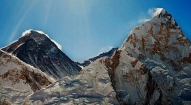
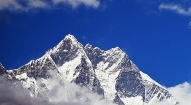
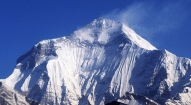
Day 01: Arrive Kathmandu International Airport- T I A (1300m) and transfer to hotel.
Day 02: After breakfast we set out for an extensive guided sightseeing tour of Kathmandu valley’s cultural, historical, religious and (world heritage) sites. During the course, we visit the famous Pashupatinath temple of Lord Shiva situated at the holy bank of River Bagmati where we will also observe the Hindu cremation ritual. We then proceed to the Boudhanath stupa, a major pilgrimage centre for the Buddhist faith which also is the largest of its kind in the world. We then have a short break for lunch followed by a visit to Swoyambhunath stupa also known as the Monkey Temple from where we can have a bird’s eye view of whole of Kathmandu valley. Following this we then proceed for a visit to Kathmandu Durbar Square, the oldest royal palace of Kathmandu and a UNESCO world heritage site. The whole are of Kathmandu Durbar Square is dotted with numerous fascinating Nepalese architect dating back many centuries. The site is also the home to Nepal’s living Goddess – Kumari, where we will also have the opportunity to experience firsthand this unique Nepali tradition. In the evening we will attend the welcome dinner hosted by Makalu Adventure with live Nepalese culture shows.
Day 03: Kathmandu ( 1310m) - Lukla (2827m) - Phakding (2652m) 5 hours
After a very early start, and an early take off from Kathmandu Domestic Airport, a 45 minute flight is all it takes to propel us into the Everest region of Nepal. The landing at Lukla (2800m) is spectacular and on arrival we are greeted by our sirdar and trekking crew who organise the luggage and hustle us off for tea. After a leisurely lunch we start the trek in earnest, setting off for a gentle walk to Phakding (2800m), a further 3 hours to the north. The trail leads through Lukla, past hotels, shops and airline offices to the edge of the Lukla plateauwhere the trail drops to meet the intersection of the Jiri trail at Chablung. From here the trail follows the Dudh Kosi north through the village of Ghat and then finally to Phakding where we spend the night.
Day 04: Phakding – Namche Bazaar (3440m) 7 hours: We will ascend slowly towards the route to Everest base camp. Advancing at a slow pace ensures proper Acclimatization. We cross the river to walk through tracts of blue pine and rhododendrons forest that is very spectacular during the spring months when the flowers are at their full bloom. We will cross the Dudh Koshi River at Benkar and enjoy great views of the snow peaks of Kusum Kangaru and Thamserku. After Monjo the trek will be a little strenuous as it involves steep ascent to Namche Bazaar. From here it is a short walk to the entrance to the Sagarmatha National Park where our permits are checked before we descend quite steeply to Jorsalle. The trek continuous up stream on a flat terrain on the confluence of the Bhote Koshi and Dudh Koshi Rivers. After crossing a large suspension bridge high above the River, we c limb steeply to the village of Namche Bazaar. A slow and steady pace is recommended on this section of the climb and we are encouraged to make the most of the fantastic photographic opportunity as the peaks of Everest, Lhotse, Nuptse, Ama Dablam and Tawache come into view. The effects of high altitude will slow down our pace a little, so we encourage you to advance slowly. Upon our arrival in Namche the rest of the day is at leisure or if you would like you can explore this Sherpa capital on your own. Overnight at hotel.
Day 05: leisure (acclimization) in Namche Bazar: We will rest a full day at Namche Bazar allowing our bodies to acclimatize to the altitude of 3440m. In the morning there is an option of walking up to the Everest View Hotel (3450m) while returning for lunch.
Day 06: Namche – Thame (3800m), 4hrs:
The trek from Namche bazaar to Thame takes about 4 hours. From Namche the route turns into west and the trail is almost level as we head up the Bhote Koshi valley, once a popular trading route into Tibet. Along the walk we pass many prayer flags, Mani walls and carved stones, all indicative of the Tibetan Buddhist culture of this area. After descending to the Bhote Koshi, the trail climbs steeply to Thame. From here there are good views of the peaks of the Teng Kangpoche and Kawangde and to the north is the Nangpa La, the pass leading to Tibet. Thame Gompa is situated above the village overlooking the valley and is the site for spring celebration of Mani Rimdu Festival.
Day 07: Thame – Lungdeng (6 hrs):
From Thame, the trek to Lungdeng takes about 6 hours. The route follows the Bhote Koshi valley and en route one can observe varieties of plants and animals, Sherpa culture and unique settlements of Sherpa people.
Day 08 Lungdeng –Sumna (4815m): We are now in the quite Thame valley from here on we may well see many Tibetan traders with herds of yaks carrying goods from Tibet or heading to and from Nangpa La. From Arye, the trail is easy for a while which gradually climbs up to a large flat area where the valley splits and is a good place for lunch. After lunch the trail continuous to climb gradually at first and then it crosses a landslide area. We then descend towards Sumna and set up our camp for tonight, just below the Sumna glacier.
Day 09: Sumna – Kangchung: Today we take a path that is most probably hardly walked over by the normal tourists visiting the Everest region. This is a short walking day up to the valley to Lunag (5070m) and Kangchung (5250m) which is situated at the base of Nangpai Gotoya. We camp at Kangchung for 2 nights.
Day 10: Day hike to Nangpa La (5710m): This is a long and rather difficult walk as we walk towards the Tibetan border. Leaving very early we descend onto the rocky glacial moraine of the Nangpa glacier. Ahead of us, we can see the pass in the far distance but to get there we must cross from one side of the magnificent glacier to the other. Walking on the glacier is amazing and we must take care as the crevasses surround us. The trail changes from year to year but is marked by yak dung from the hundreds of Tibetan traders who bring their yaks across the pass regularly. We pass through Dzasampa (5400m), a small campsite actually on the glacier where the trading Tibetan camp with their yaks. The trail continuous to zig zag up and down and back across to the ride side of the glacier again for the final steeper climb up on to the ice and snow. We eventually come to the top of the glacier from where it is an easier 45 min walk to the very top. Finally we will spot the prayer flags which mark the top of the Nangpa La and the border between Tibet and Nepal. The views from here are worth all the effort of the climb. Ahead, we can look down and across onto the barren Tibetan plateau and to our right stands Mt. Cho Oyu as other peaks and glacier surrounds us. The marker post at the top is the border between Nepal and Tibet. We return to Kangchung the same route.
Day 11: Trek back to Arye (4910m): We follow the same route back to Arye. If lucky we can follow the caravan of Tibetan traders together and get to know the difficulty they have to face to make a trade in Namche Bazar. This route is also often used by the Tibetan refugees who flee Tibet to go to India.
Day 12: Arye – Renjo La Base camp (4900m): Renjo La base camp is often called as Yak Kharka Camp. This place is situated below the Renjo la pass in an altitude around. Today’s trek is short and easy one as we need the energy to cross the Renjo La pass the next day.
Day 13: Renjo La Base Camp – Gokyo (4790m): The big day starts really early as we have to walk about 4 hours to reach the pass, going slow because of the high altitude. After a brief stopover at the Renjo La pass to enjoy the stunning beauty of Everest range and take photographs, we start on the difficult downhill journey for about 3 hours to reach the village of Gokyo, by walking along the stunningly beautiful Dudh kund (milky lake).
Day 14: Rest day in Gokyo and excursion in and around Gokyo Valley: Gokyo is a trade centre where the Sherpa people run lodges providing facilities to the trekkers. Gokyo is situated by the side of Ngozumba glacier, the biggest glacier in Nepal. Today we can explore many lakes and sites in Gokyo.
Day 15: Trek / climb to Gokyo Ri (5340m): Trek / climb from Gokyo to Gokyo Ri and trek back to Thare via Gokyo village which takes about 4 hours. Gokyo Ri looms above the village on the northern edge of the lake and we leave camp just after first light, following a steep path up the hillside. As we climb, the summit of Everest, Lhotse, and Makalu slowly come into sight and the view from the summit of Gokyo Ri itself is one of the finest to be had in the Everest region. Some say that the view from here is even better than Kala Patthar. After lunch it is a short walk to the village of Thare.
Day 16: Thare - Tengboche (3850m): Trek from Thare to Tengboche which takes about 6 hours. The trail descends and climbs at a slow speed. Upon our arrival at Tengboche, we come across a famous monastery –the largest in the Khumbu region. There is a trekkers visiting center where local Sherpa make exhibition of different goods to be sold to interested trekkers. They will also have a slide show presentation about the Sherpa people, their culture and environmental protection initiatives.
Day 17: Trek to Monjo (2835m): We continue our trek leading back through Namche Bazaar. We should have enough time in Namche to shop and relax in the bakery with a coffee and cake or even to check the internet. A steep descend for 600m down Namche hill leads to the suspension bridge used for crossing the Dudh Koshi River and the small village of Monjo. Monjo is a quitter place to stay than Namche and it also means that our porters will have a less strenuous walk to Lukla the following day.
Day 18: Trek to Lukla: The trail now flatten outs and we cross the river twice more before the rising traverses up the hill side, passing numerous tea houses.
Day 19: Lukla – Kathmandu by plane
Day 20: After breakfast we will set out for a sightseeing tour of Bhaktapur and Patan and return to our hotel at late afternoon.
Day 21: Final Departure from Nepal.
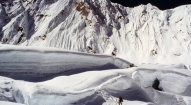
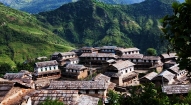
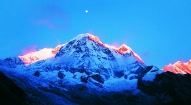
- All airport/hotel transfers.
- All accommodation in Kathmandu with b /f.
- All camping equipment, accommodation, meals during the trek
- Welcome and farewell dinner.
- All domestic flight
- Trek leader, assistant trek leader, Sherpa porters- including their salary, insurance, equipment, flight, food and lodging
- Down jacket, sleeping bags, Trekking kit bag/duffel bag, trekking map and trekking poles
- All necessary paper work and permits (National park permit or entrance fees etc)
- A comprehensive medical kit
- All government and local taxes
- Nepal visa fee.
- Airport departure tax.
- International airfare to and from Kathmandu.
- Excess baggage charges.
- Lunch and evening meals in Kathmandu.
- Extra night accommodation.
- Travel and rescue insurance.
- Personal expenses (phone calls, laundry, bar bills, battery recharge, extra porters, bottle or boiled water, showers etc).
- Tips for guides and porters.





